Scientists Create Organic Slave Computers! (What Could Go Wrong?)
by James Corbett
Remember when you were a kid and you used to speculate about what wonders awaited us in the 21st century?
Wow! 2024? I bet we'll all be driving flying cars by then! . . . Or at least riding on our Back To The Future hoverboards. Yes, just imagine what amazing gadgets and technological wonders those scientists have in store for us!
And hunger? Disease? War? We'll have solved all those problems by then! I can't wait for our future utopia!
Well, here we are in 2024 and I have some news for you: there's nary a flying car in sight, and hunger, disease and war are still depressingly pervasive.
But there is one area of research where the eggheads haven't let us down: the development of frightening new technologies of enslavement!
Case in point: A Swiss tech startup has just announced the first "bioprocessor" constructed from 16 "human brain organoids."
Without even knowing what any of that means, you can already tell this is bad. But you don't know the half of it yet . . .
Finalspark and the "Living Computer"
If you keep your eye on the establishment media propaganda, you may have noticed the recent coordinated rollout of the latest MSM scare story: the AI industry is using massive amounts of energy!
"Google’s emissions climb nearly 50% in five years due to AI energy demand," screams The Guardian.
"Big Tech is turning to nuclear power because it needs more energy for AI," warns Quartz.
"AI's energy appetite might kill the power grid," screeches that bastion of tech journalism, Fudzilla.
If you're like me, you've been bracing for impact ever since these scaremongering stories started flooding the newsfeeds. After all, we know that hysteria campaigns are generally used to prepare the public for some horrible new "solution" that the technocrats have lying in wait for us.
Well, guess what? That "solution" is here, and it involves a computer made of living human brain tissue!
That's right! A Swiss startup called Finalspark just launched the first online platform providing researchers access to a "living computer" made from brain "organoids"—that is, artificially grown, in vitro human brain tissue.
Those who want the nitty gritty details of how this "Neuroplatform" has been constructed and how it operates can read Finalspark's recent research paper on the subject. In it, you can learn all about how "Human Neural Stem Cells derived from the human induced pluripotent stem (hiPS) cell line (ThermoFisher), were plated in flasks coated with CellStart (Fisher Scientific) and amplified in Stempro NSC SFM kit (ThermoFischer) complete medium."
Or, if you'd prefer to ditch the gibberish in favour of something approximating English, you can turn to the popular scientific press, which will tell you all about this nifty new technology:
The operation of the Neuroplatform currently relies on an architecture that can be classified as wetware: the mixing of hardware, software, and biology. The main innovation delivered by the Neuroplatform is through the use of four Multi-Electrode Arrays (MEAs) housing the living tissue – organoids, which are 3D cell masses of brain tissue.
Each MEA holds four organoids, interfaced by eight electrodes used for both stimulation and recording. Data goes to-and-fro via digital analog converters (Intan RHS 32 controller) with a 30kHz sampling frequency and a 16-bit resolution. These key architectural design features are supported by a microfluidic life support system for the MEAs, and monitoring cameras. Last but not least, a software stack allows researchers to input data variables, and then read and interpret processor output.
Now, if you have your head screwed on straight, the obvious question that will occur to you is: why? Why on earth are these boffins so interested in creating computers out of living brain tissue?
Thankfully, the pop-sci "journalists" can answer that one for you, too!
FinalSpark says its Neuroplatform is capable of learning and processing information, and due to its low power consumption, it could reduce the environmental impacts of computing. In a recent research paper about its developments, FinalSpark claims that training a single LLM like GPT-3 required approximately 10GWh—about 6,000 times greater energy consumption than the average European citizen uses in a whole year. Such energy expenditure could be massively cut following the successful deployment of bioprocessors.
Yes, to the surprise of no one, all this hysteria about AI power consumption just so happens to perfectly coincide with the advent of a miraculous new technology that will solve that problem. Quelle coinkydink! as the French would say.
Of course, just the idea of using human brain tissue as "bioprocessors" to perform computation seems a bit icky. . . .
. . . But wait! It gets far worse!
Slaves in a Jar
Image: Alexander Wivel
OK, let's recap: over the past month, the mockingbird media mouthpieces have begun warning in unison about a looming energy apocalypse as the AI industry begins consuming massive amounts of power. Then, out of the blue, a plucky Swiss tech startup (with private funders) arrives with a solution: a "Neuroplatform" that can save massive amounts of energy by using living human brain tissue to process information!
So far, so weird. But here's where it gets creepy: when the Firespark brainiacs talk about using living human tissue to create this "bioprocessor," that isn't a figure of speech. The "brain organoids" used in this "living computer"—developed, as their research paper tells us, "from Human iPSC-derived Neural Stem Cells"—are, in fact, alive.
This pesky little fact raises some deep moral quandaries—the type of "brain in a jar" ethical dilemmas that are, naturally, completely overlooked by the Firespark bioengineers and the fawning corporate press covering the story.
To wit:
If these brain computers are in fact composed of living human brain tissue, do they count as living beings, with all the same rights and considerations we would extend to any other living creature?
They can perform calculations and process information . . . so what if they're sentient? Can they be aware of their surroundings? Do they feel pain or suffering?
How are these living creatures made to do this computing, anyway? And what if these helpless slave computer-brains—created in the lab for the sole purpose of processing information for their masters—didn't want to do the scientists bidding?
Well, at least that final question has already been asked and answered, according to one recent report on Firespark's Neuroplatform.
After accessing the provided login/password, researchers gain the ability to remotely send electrical signals to neurons and receive their responses. It is then the responsibility of researchers to devise optimal algorithms for controlling the behavior of the organoids.
Users can mimic memory function by using periodic electrical stimulation to reinforce synapses through repetition, thus making desired pathways stronger.
Researchers do this by training the organoids through a reward system. The organoids are rewarded with dopamine, the neurotransmitter responsible for pleasure (and addiction).
Meanwhile, as “punishment,” the organoids are exposed to chaotic stimuli, such as irregular electrical activity.
Yes, you read that correctly. Stripped of all the niceties and polite circumlocutions, these researchers are alternately doping and torturing this brain tissue to force it to process information for them. If we consider for a moment that these lab-grown human brain organoids are in fact living creatures, then this entire system should be sending shivers down your spine.
In his own article on the subject, independent researcher Michael Snyder eschews the "organoids" euphemism and calls these beings what they are—"enslaved mini-brains." He then puts this "reward and punishment" training system in its proper perspective:
If the enslaved mini-brains do what they are supposed to do, they are rewarded with lots of pleasure. If the enslaved mini-brains do not do what they are supposed to do, they are hit with lots of “irregular electrical activity.” In other words, these miniature human brains are tortured until they learn to obey. Reading that should literally make you sick. What these scientists are doing is so incredibly evil.
Amazingly, neither the Firespark scientists themselves nor the PR men masquerading as pop-sci "journalists" have addressed these concerns or even shown any interest in the philosophical implications of growing living human tissue in a lab and forcing it to do their bidding.
If confronted, they would doubtless tell anyone with questions about this project to just relax! After all, these aren't fully developed brains harvested from fresh human cadavers or anything like that. They're just forebrain organoids (FOs) hooked up to electrodes on a "multi-electrode array" (MEA).
Look for yourself:
See? That's nothing to get worked up about, is it?
But still, considering that these "forebrain organoids" are alive . . . does that mean they die?
Why, yes! Yes, they do die! But don't worry, everyone, the Finalspark team's diligent efforts have greatly increased the lifespan of these biocomputers!
As the researchers themselves brag, while the initial lifespan of these biocomputers "was only a few hours," they have—by implementing "various improvements" to the "microfluidics setup"—managed to extend this lifespan to "up to 100 days in best cases."
Of course, Finalspark fails to describe what exactly it does with these "organoids" after they die. But it does inform us that, during the four years the Neuroplatform has been running, the enslaved mini-brains have been replaced 250 times. And, given that they have four of these human brainlets hooked up in their "multi-electrode array" at a time, "this amounts to testing over 1,000 organoids."
If this isn't the strangest and creepiest story you've encountered lately, then I don't know what to say. But if you'll agree with me that this story is perverse, horrific and deeply disturbing, then you'd better prepare yourself. If the technocrats have their way, this is only the beginning.
The end of vitalism?
It's important to note that what Finalspark is doing is not some fringe, ghoulish scientific anomaly. It's not some strange outlier dreamed up by a band of mad scientists. In fact, it's not even a new idea.
As it turns out, there is an entire field of computing called "wetware computing" that concerns itself with finding ways to use organic material to process information. The first example of this "living computer" idea was constructed in 1999, when Professor Bill Ditto at the Georgia Institute of Technology created a "novel calculator"—dubbed the "leech-ulator"—which used leech neurons to perform simple calculations. Ditto insisted the idea was revolutionary because ordinary computers have to be told exactly what to do whereas bioprocessors can work it out for themselves. Blessed with its natural, organic intelligence and problem-solving abilities, these "living" computers can even derive correct answers from partial or faulty data inputs.
"Ordinary computers need absolutely correct information every time to come to the right answer," he says. "We hope a biological computer will come to the correct answer based on partial information, by filling in the gaps itself."
And that was 25 years ago. Since then, we have seen the advent of computers made from human brain cells that can perform voice recognition. And a cluster of human brain cells on a computer chip that have been trained to play the "Pong" video game. Now that Neuroplatform is available for researchers to play around with, who knows what these geniuses will come up with next!
So, what would you get if you put one of these "living computers" into a cyborg exoskeleton covered in living human skin?
That may seem like the type of question that is confined to the purely hypothetical realm—fodder for some wacky sci-fi writer with an overactive imagination, perhaps—but it isn't. As we've already seen, "living computers" using human brain tissue to make calculations are already here. And guess what? Living skin for robots is already here, too.
Just last month, it was announced that "[a] team of scientists at the University of Tokyo has developed a robot face covered with self-healing, lab-grown skin that can mimic human expressions."
Now just imagine if an organic slave computer brain was put into a robot covered in that self-healing, lab-grown, human-expression-mimicking skin. And now imagine if that robot looked like the truly skin-crawling (pun intended) Disney animatronic robot.
(Yes, the Disney robot is really a thing, and it's even more disturbing when you see it in motion.)
So, let's answer that question. What would you get if you put an organic slave computer inside such a skin-covered, animatronic robot?
The answer is tricky. You certainly wouldn't have a human. But you wouldn't exactly have a robot, either. And that is exactly the point.
You might recall my coverage of the "biodigital convergence" from three years ago. If not, please go back and re-read that article or re-watch that podcast to refamiliarize yourself with the crazy Canadian government think tank report on how "biological and digital systems are converging" and how this convergence "may transform the way we understand ourselves and cause us to redefine what we consider human or natural."
When you do so, please notice how I made special note of this passage from that document:
As we continue to better understand and control the mechanisms that underlie biology, we could see a shift away from vitalism—the idea that living and nonliving organisms are fundamentally different because they are thought to be governed by different principles. Instead, the idea of biology as having predictable and digitally manageable characteristics may become increasingly common as a result of living in a biodigital age. Any student of biology today will have grown up in a digital world and may consciously or subconsciously apply that frame of reference to bioinformatics and biology generally.
As I noted at the time, this is one of the linchpins of the entire transhumanist agenda. Just as the Central Bank Digital Currency paradigm and the complete control of our digital life is predicated on the digital ID system, so, too, is the transhumanist dream of merging man with machine predicated upon a breakdown in our philosophical intuition of vitalism. In other words, in order to get us to accept the coming transhuman dystopia, the technocrats are going to have to break down our fundamental, deeply-held belief in the difference between living, organic matter and inanimate non-life.
That sense of vitalism is precisely why we find organic slave computers with living human skin and animatronic robots with realistic facial expressions so profoundly creepy. These technologies start to challenge our belief in the boundaries between life and non-life.
Now, there is one hopeful thing in all of this: if you still do feel that sense of creepiness when you think about or read about or see this technology, then that is a good thing. That means you still have your head screwed on straight even in the face of so much propaganda designed to convince us to give in to the Trans(human) Agenda.
Embrace that feeling of creepiness. Do not lose your sense of disgust at this technology. You will need to cling on to that so that you can forcefully and powerfully reject this technology and everything and everyone associated with it. Those who are seeking to break down this distinction and desensitize us to this "living" computer idea are our ideological enemies. If we ever stop seeing them as the enemy in this struggle, that is when we lose our humanity altogether.
Having said that, this is not some theoretical warning about some far-off, hypothetical threat. It is here. Now. These technologies already exist.
Creepy Disney robots.
"Self-healing" cyborgs covered in lab-grown living skin.
And, of course, organic slave computers.
Welcome to the world of 2024, everyone! God help us all.
Source: The Corbett Report
Bonus: When science becomes the stuff of B-Movies and Punk Rock songs.
Next up?
They Saved Hitler's Cock
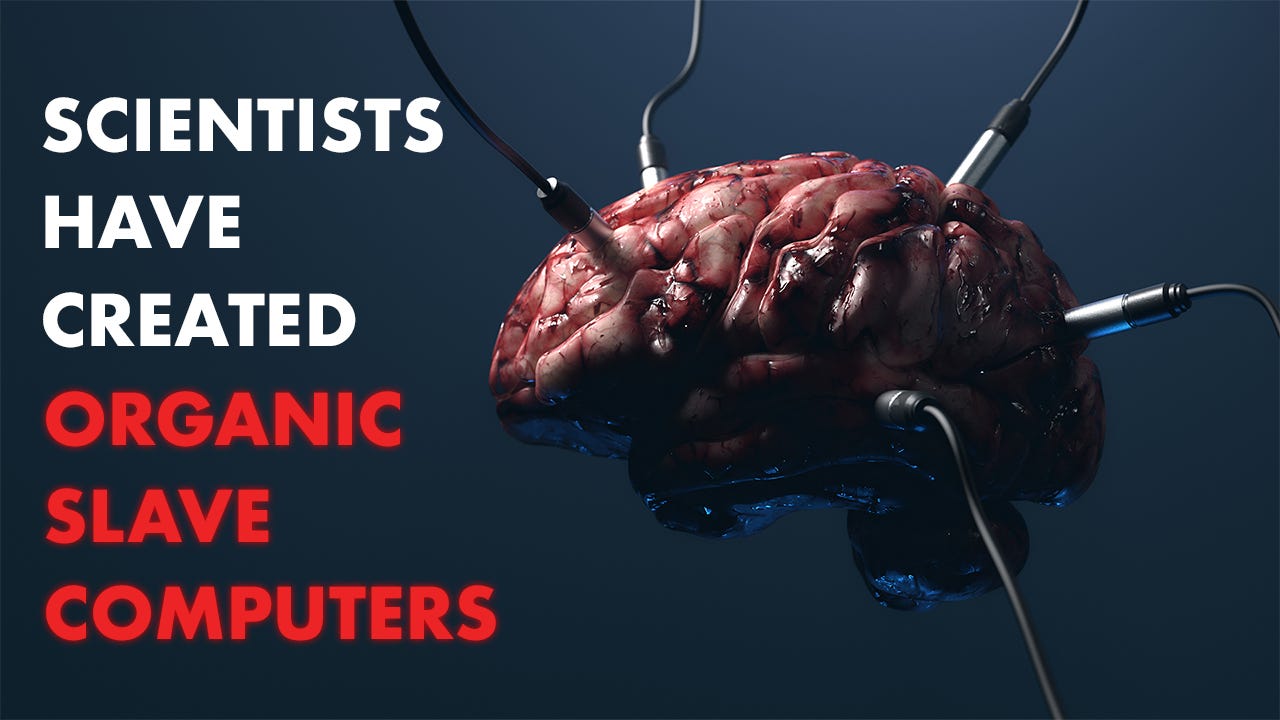

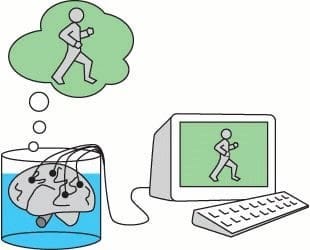
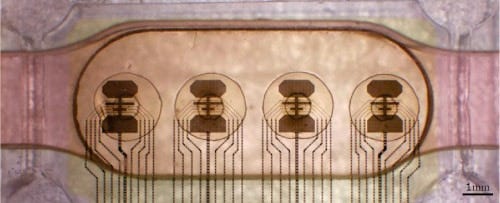
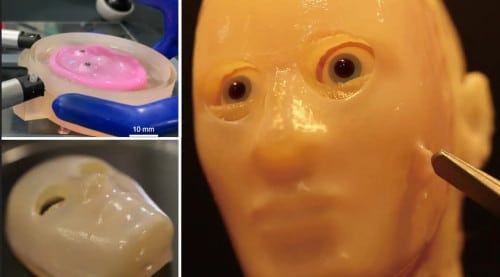
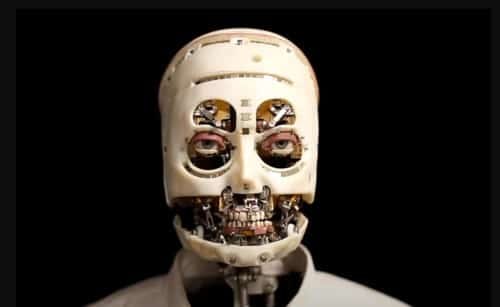




Comments
Post a Comment